Making Mozzarella & Burrata in Italy
Making Mozzarella & Burrata
in Italy
*

Mozzarella di bufala is traditionally produced solely from the milk of the Italian Mediterranean buffalo. A whey starter is added from the previous batch that contains thermophilic bacteria, and the milk is left to ripen so the bacteria can multiply. Then, rennet is added to coagulate the milk. After coagulation, the curd is cut into large, 1″–2″ pieces, and left to sit so the curds firm up in a process known as healing.
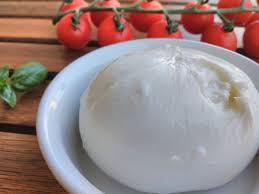
After the curd heals, it is further cut into 3/8″–1/2″ large pieces. The curds are stirred and heated to separate the curds from the whey. The whey is then drained from the curds and the curds are placed in a hoop to form a solid mass. The curd mass is left until the pH is at around 5.2–5.5, which is the point when the cheese can be stretched and kneaded to produce a delicate consistency—this process is generally known as pasta filata.
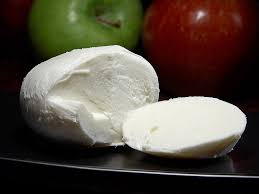
According to the Mozzarella di Bufala trade association, “The cheese-maker kneads it with his hands, like a baker making bread, until he obtains a smooth, shiny paste, a strand of which he pulls out and lops off, forming the individual mozzarella.” It is then typically formed into cylinder shapes or in plait. In Italy, a “rubbery” consistency is generally considered not satisfactory; the cheese is expected to be softer.
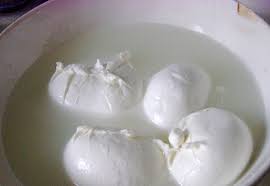
*
Burrata starts out much like mozzarella and many other cheeses, with rennet used to curdle the warm milk. But then, unlike other cheeses, fresh mozzarella curds are plunged into hot whey or lightly salted water, kneaded, and pulled to develop the familiar stretchy strings (pasta filata), then shaped in whatever form is desired.
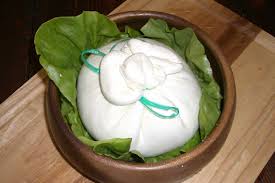
When making burrata, the still-hot cheese is formed into a pouch, which is then filled with scraps of leftover mozzarella and topped off with fresh cream before closing. The finished burrata is traditionally wrapped in the leaves of asphodel, tied to form a little brioche-like topknot, and moistened with a little whey. The asphodel leaves should still be green when the cheese is served to indicate the cheese’s freshness.[6] More recently, the cheese is often sold in a plastic bag or container.
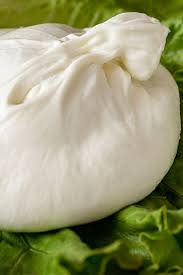
*
*
Join Joanne and Frank on Facebook at
Everybody Loves Italian
and
Visit us on the web at EverybodyLovesItalian.com
This site contains product affiliate links. We may receive a commission if you make a purchase after clicking on one of these links.



